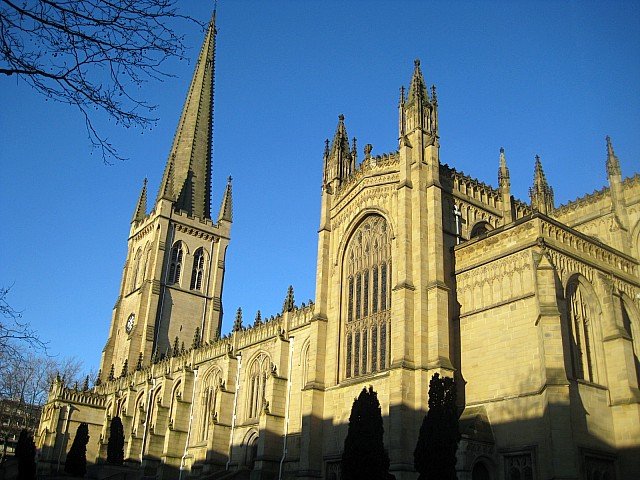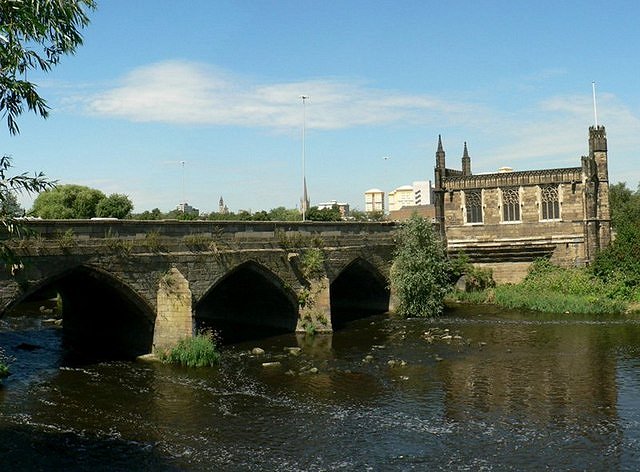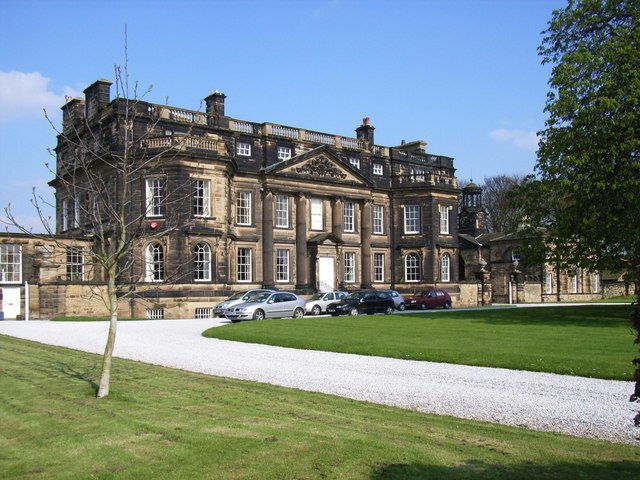 Wakefield Cathedral: Source: https://commons.wikimedia.org/wiki/File:Wakefield_-_Cathedral.jpg
Wakefield Cathedral: Source: https://commons.wikimedia.org/wiki/File:Wakefield_-_Cathedral.jpgAuthor: Mike Kirby

Wakefield is a city and metropolitan borough in West Yorkshire, England. It covers 338.6 sq km (130.7 sq mi) and has a population of 326,000 people (2012 estimate). The administrative center is at Wakefield, which other towns within the metropolitan borough include Normanton, Pontefract, Featherstone, Castleford and Knottingley.
Wakefield is located on the River Calder, on the eastern edge of the Pennines. The area has been inhabited since prehistoric times, as evidence by recovery of flint and stone tools in the area. The earliest inhabitants were believed to the the Brigantes, a Celtic tribe.
Ancient Romans occupied the Wakefield area in AD 43. After the departure of the Romans, the area was settled by the Angles in the 5th century and by Vikings after AD 867. By the 11th century, there was a permanent settlement here. The settlement suffered retaliation by William the Conqueror in 1069 for resisting Norman rule.
 Wakefield Bridge and Chantry Chapel, Wakefield: Source: https://commons.wikimedia.org/wiki/File:Wakefield_Bridge_and_the_Chantry_Chapel_-_geograph.org.uk_-_281864.jpg
Wakefield Bridge and Chantry Chapel, Wakefield: Source: https://commons.wikimedia.org/wiki/File:Wakefield_Bridge_and_the_Chantry_Chapel_-_geograph.org.uk_-_281864.jpgAuthor: RichTea

By the 15th century, Wakefield has grown into an inland port. When the Industrial Revolution arrived in the 19th century, Wakefield had prospered from its trade in wool, corn and tanning. A number of navigation canals were built during this period, as the town became a trading hub for produce from the surrounding region.
The industries that supported Wakefield's economy sustained themselves to the turn of the 20th century, and from then on began a gradual decline. By the mid 1970s, many of the city's textile factories were closing. The start of the new millennium brought redevelopment to Wakefield. Among the projects included Trinity Walk, a retail and commercial development to the northeast of the city center.
 Wakefield Bridge and Chantry Chapel, Wakefield: Source: https://commons.wikimedia.org/wiki/File:Heath_Hall,_Wakefield_-_geograph.org.uk_-_356395.jpg
Wakefield Bridge and Chantry Chapel, Wakefield: Source: https://commons.wikimedia.org/wiki/File:Heath_Hall,_Wakefield_-_geograph.org.uk_-_356395.jpgAuthor: Ian Russell

Visiting Wakefield
Take the M1 motorway and turn off at Junction 40. Head east on A638 to reach Wakefield.Places of Interest in Wakefield
- Nostell Priory: Palladian-style house in Crofton, near Wakefield.
- Pontefract Castle: Castle first built by Ilbert de Lacy in 1070.
- Sandal Castle: Ruined medieval castle in Sandal Magna, a suburb of Wakefield. Open Summer - Mon-Sun 11:00 am - 4:30 pm, Winter Sat & Sun only - 11:00 am - 4:00 pm.
- Wakefield Cathedral: Formally known as the Cathedral Church of All Saints Wakefield, it dates back to the 14th century.
Wakefield is  on the Map of cities in England
on the Map of cities in England
 Latest updates on Penang Travel Tips
Latest updates on Penang Travel Tips
 Discover with Timothy YouTube Channel
Discover with Timothy YouTube Channel
 PG Food Channel
PG Food Channel
 Learn Penang Hokkien YouTube Channel
Learn Penang Hokkien YouTube Channel
 SojiMart Videos
SojiMart Videos
Map of Ceremonial Counties of England
Latest from Discover with Timothy: Gurney Bay - what to see and do there
About this website

Hello and thanks for reading this page. My name is Timothy and my hobby is in describing places so that I can share the information with the general public. My website has become the go to site for a lot of people including students, teachers, journalists, etc. whenever they seek information on places, particularly those in Malaysia and Singapore. I have been doing this since 5 January 2003, for over twenty years already. You can read about me at Discover Timothy. By now I have compiled information on thousands of places, mostly in Peninsular Malaysia and Singapore, and I continue to add more almost every day. My goal is to describe every street in every town in Malaysia and Singapore.
Robbie's Roadmap
- Episode 1: Robbie's Journey to Financial Freedom
- Episode 2: Lost in America
- Episode 3: The Value of Money
- Episode 4: The Mentor
- Episode 5: The Thing that Makes Money
- Episode 6: The walk with a Billionaire
- Episode 7: The Financial Freedom Awakening
- Episode 8: Meet Mr Washington
- Episode 9: The Pizzeria Incident
Copyright © 2003-2024 Timothy Tye. All Rights Reserved.


 Go Back
Go Back